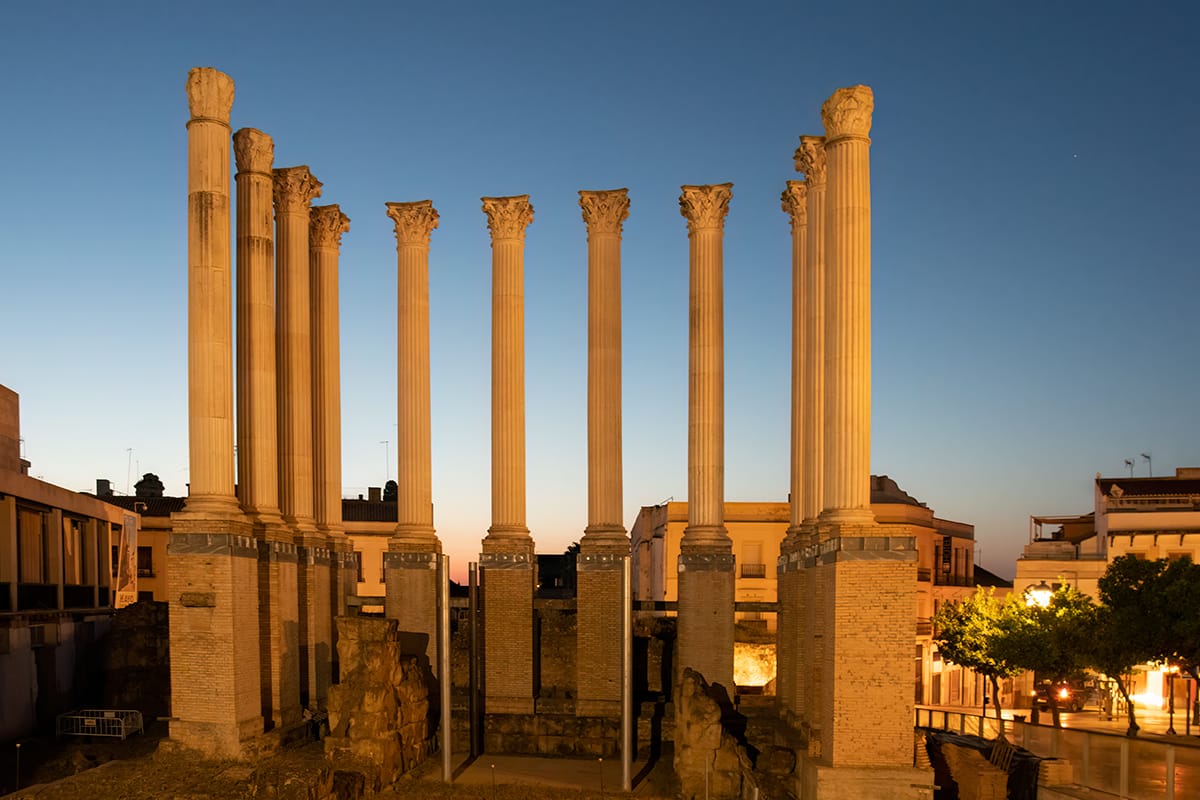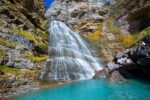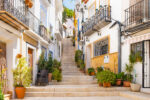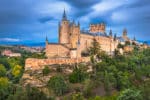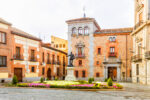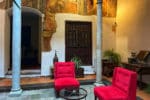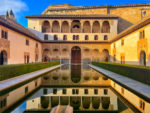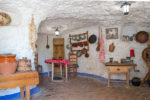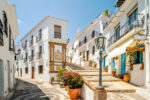Looking for unusual things to do in Cordoba? Here is an itinerary for a self-guided Roman Cordoba walking tour to uncover the relics of a once-prosperous Roman city.
One of the most instantly-recognizable images of Cordoba is the magnificent Cordoba Roman Bridge. This 2,000-year-old monument is the most iconic representation of Cordoba’s long and rich Roman history.
Yet, the Roman bridge is only the start of the journey into the splendour of Roman Cordoba. This guide invites you on a journey to uncover the secrets that lie beyond Cordoba’s Moorish splendour. Secrets that bring to life a dazzling capital of a wealthy Roman province Hispania Baetica, built in the image of Rome itself.
So if you are a fan of all things Roman and would like to explore some of Cordoba’s Roman past, add this Cordoba walking tour to your list of things to do in Cordoba.
Roman Cordoba
Imagine a walled city on a riverbank, with a monumental temple of white marble jutting out from one of its sides. Aqueducts lead towards it from the surrounding countryside and paved roads, framed by rows of orange trees, run to its gates.
Outside the city walls, sprawling necropolises are surrounded by olive groves and a colossal stone bridge stretches across the river. Inside the walls, the city streets are lined with temples and fountains, a circus (or a hippodrome), a theatre, two forums, a shopping plaza and public baths. This was Roman Cordoba – the birthplace of Seneca, a statesman and philosopher who went on to become Nero’s trusted adviser.
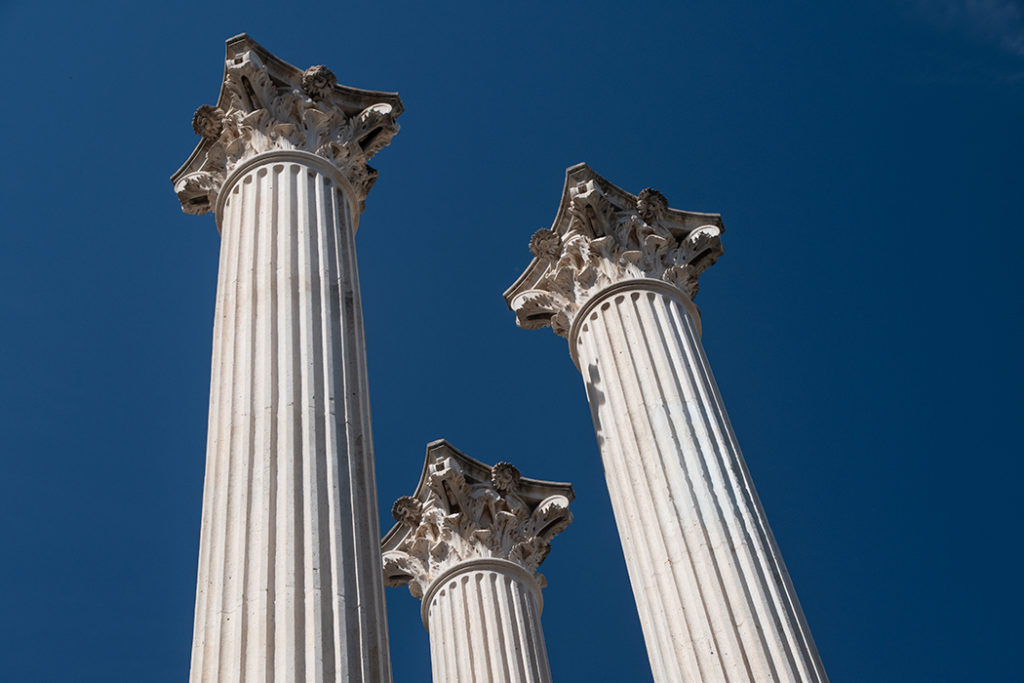
Roman past is everywhere under your feet in Cordoba: fragments of the city wall in an underground car park of a private residence, remnants of a great structure underneath the Cordoba University campus, and mosaic floor tiles in a restaurant basement.
This Roman Cordoba walking tour starts at Cordoba Roman Bridge and takes you on a journey across the city to some of the best-known and almost unknown Roman sites of Cordoba. But first….
A Brief History of Roman Cordoba
The history of Roman Córdoba began around the 2nd century B.C. when it was founded by Roman General Marcus Claudius Marcellus. There is a statue commemorating his fateful deed near the Roman Temple.
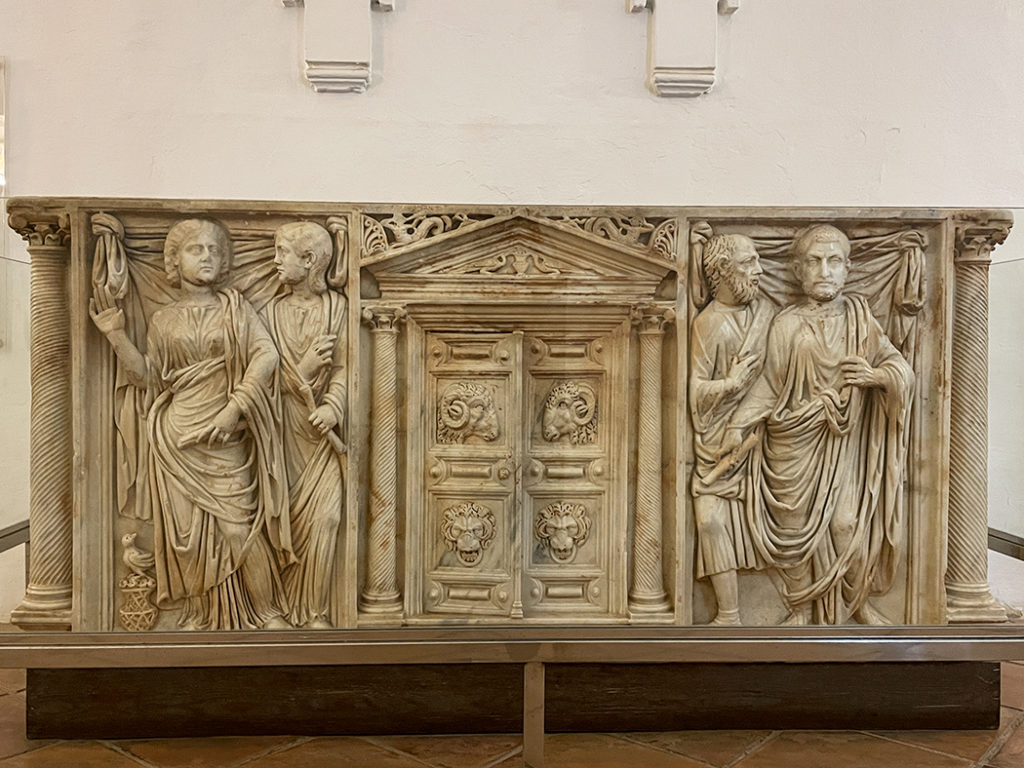
During the era of the Roman Republic, Córdoba expanded to include a forum and its first perimeter wall. However, most of the original city was destroyed in the civil wars of the first century BC, between Julius Caesar and Pompey’s sons. These wars brought an end to the Roman Republic and marked the beginning of the Roman Empire.
After the wars, Cordoba came to prominence as the capital of the Roman province Baetica, which was granted the status of Colonia Patricia in 25 BC by the first Roman emperor, Octavio Augusto, making its residents Roman citizens.
Many Roman war veterans were granted land in Cordoba, and before long, Baetica became one of the wealthiest Roman colonies, famous for producing the best olive oil in the empire.
Cordoba’s population grew, and its prosperity inspired a period of intense urban expansion, especially in the middle of the 1st century. The city streets were embellished with fountains and public baths, and new temples, a forum, and an amphitheatre were built. Some of these structures can still be found today below the streets of Cordoba.
Cordoba Roman Bridge
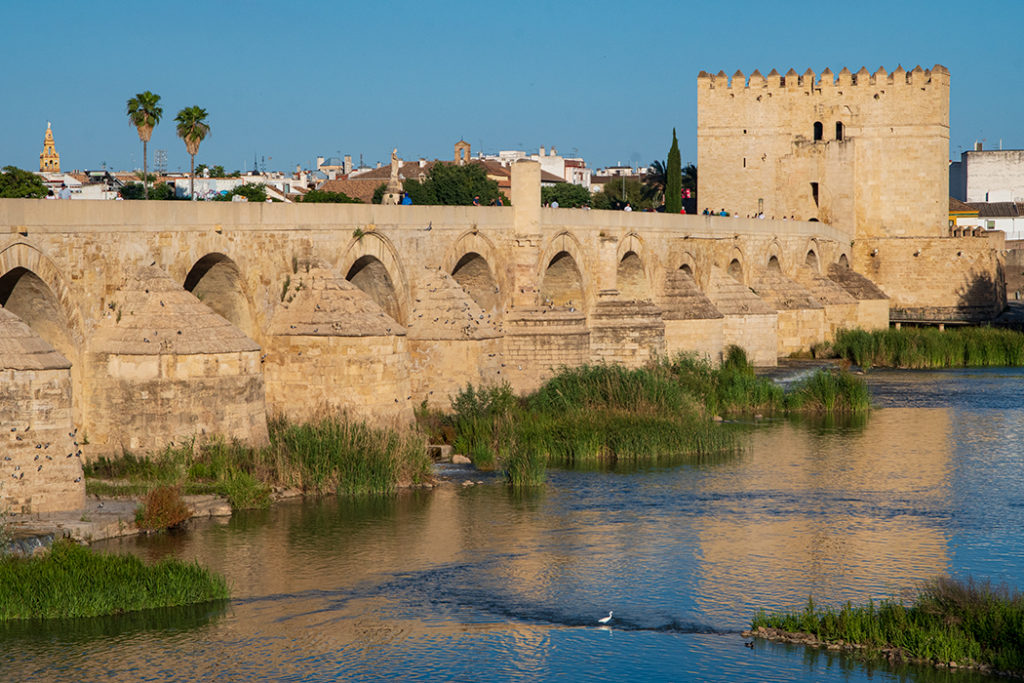
Originally built in the 1st century BC during the reign of Caesar, the Cordoba Roman bridge was the only bridge into the city until the middle of the 20th century.
Little remains of the original structure of the bridge, only the 14th and 15th arches from its northern end. Over the centuries, the flow of the Guadalquivir River eroded the masonry of its monumental buttresses, and the bridge was renovated by the later empires numerous times.
Today the bridge stretches for 247 meters, upheld by 16 arcades (one less than the original structure), which are supported by irregular semi-cylindrical buttresses. It is bookended by two defensive structures – the Calahorra Tower, added by the Muslims in medieval times, and the modern gate of Puerta del Puente.
Despite all the renovations and additions, the Cordoba Roman bridge has a distinctly ancient appearance. So much so, that in the famous TV series Game of Thrones, the Roman Bridge of Cordoba doubled as ‘The Long Bridge of Volantis’ spanning the mouth of the Rhoyne River.
The bridge is at its best at dawn and dusk when the low angle of the sun accentuates its red and golden masonry. So, plan to either start or end your walk through Roman Cordoba at the bridge to soak in the incredible sight.
Alcázar of the Christian Monarchs
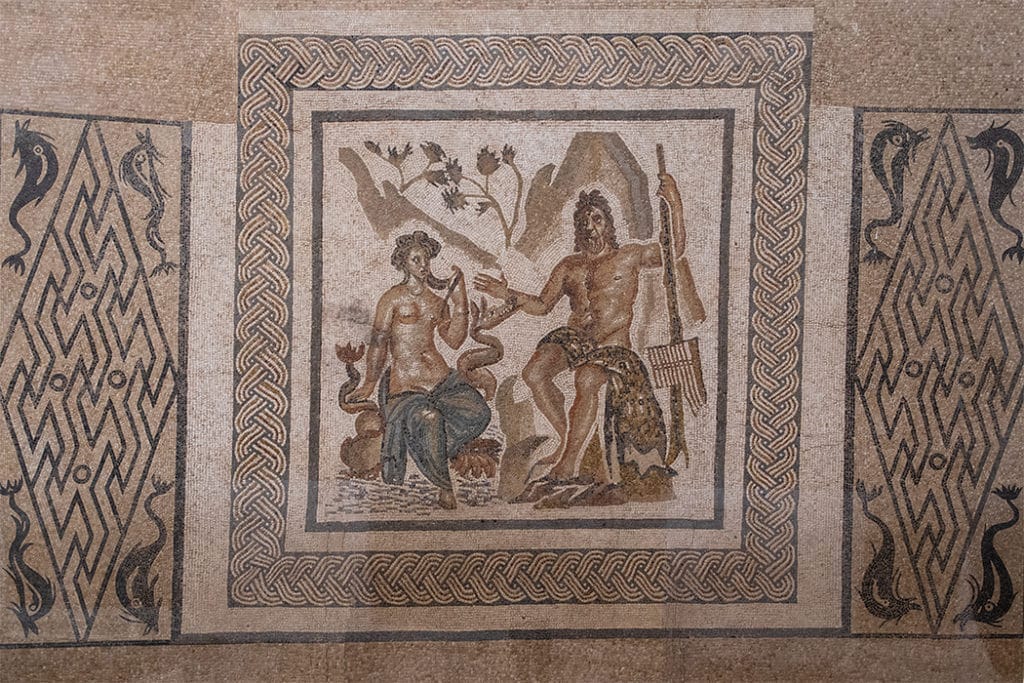
Like most buildings in Cordoba, the Alcazar of the Christian Monarchs was built on the site of the Moorish Alcazar Andalusí, which itself sat on the foundation of the Roman headquarters of the river port customs.
The remnants of the customs building now lie beneath the Patio de las Mujeres. Next to the river, there are also some remnants of the Roman city walls (you will explore a better section of the wall later in the walk)
But the most splendid traces of Roman Cordoba at the Alcazar are displayed in the Hall of the Mosaics, right above the vaults of the Royal Mudejar Baths.
The mosaics, some of which are enormous, were unearthed beneath Plaza de La Corredera where the circus was once located. The most striking piece is the one depicting the Cyclops Polyphemus wooing the nymph Nereid Galatea. The giant has a third eye set in the middle of his forehead. And the nymph rides a draconic sea-serpent.
There are also other Roman artifacts on display at Alcazar: a sarcophagus, a column with its base deep below the ground level, as well as a few capstones in the garden.
Roman Mile markers and mosaics at the Mezquita
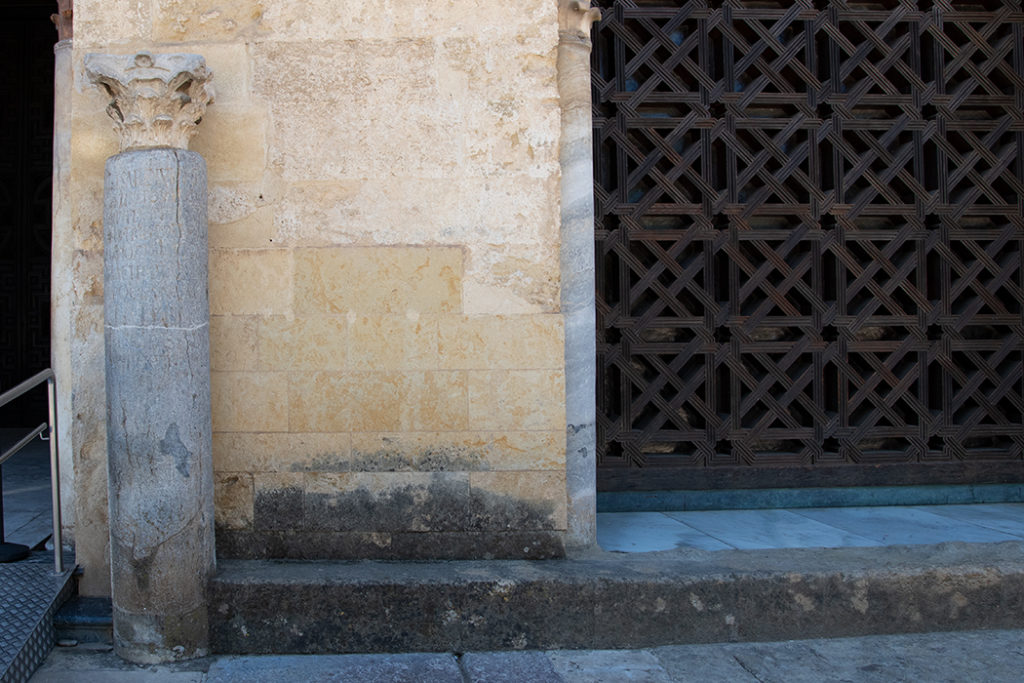
If you are planning to visit Mezquita (and you should) you can spot a couple of Roman relics at this popular Arab monument.
In the Patio de los Naranjos you’ll notice some free-standing columns that are quite different from the rest. These are Roman milestones. One, for example, is from via Augusta, the main Roman road that connected Cordoba to Rome. The milestone at the patio comes from Linares, a town in Jaen province.
Also, in the oldest section of the Mezquita, the first part you enter, you can see the mosaics from the Roman Church of St Vincent’s, on whose foundation the Mezquita was built. A small section of the tiles can be seen through a glass panel on the mosque’s floor.
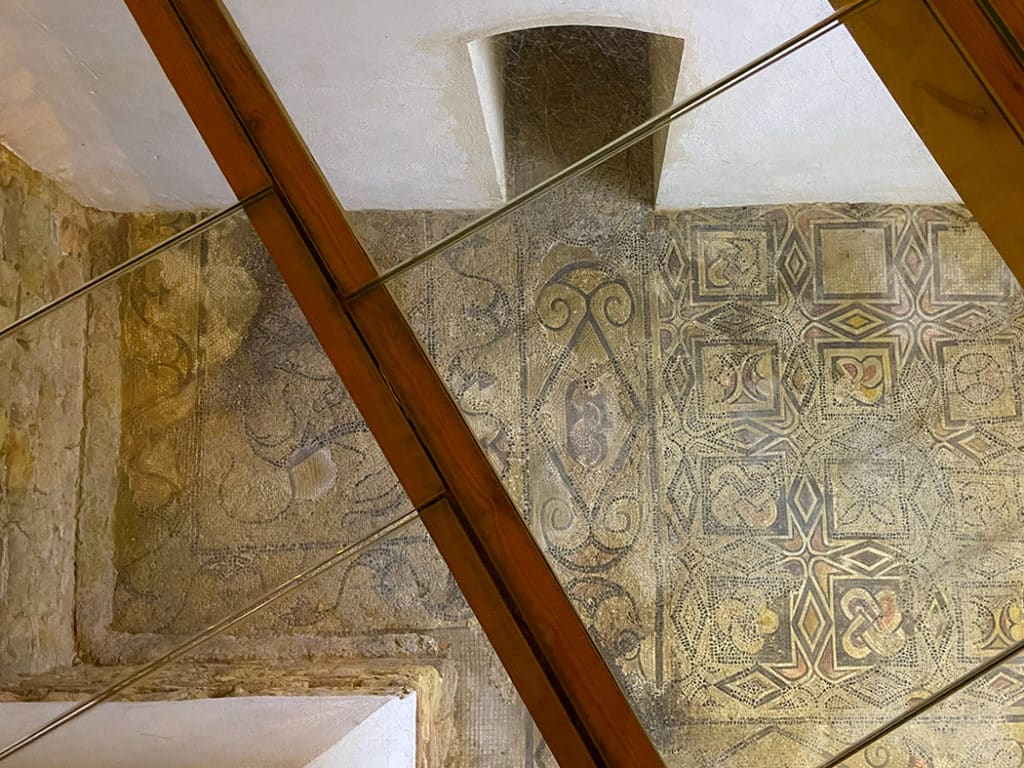
And there is also a section of the Imperial city wall of Roman Cordoba in the Mezquita’s car park. The car park is open to the public and can be visited at any time during its business hours.
Roman Theater in the Archaeological Museum
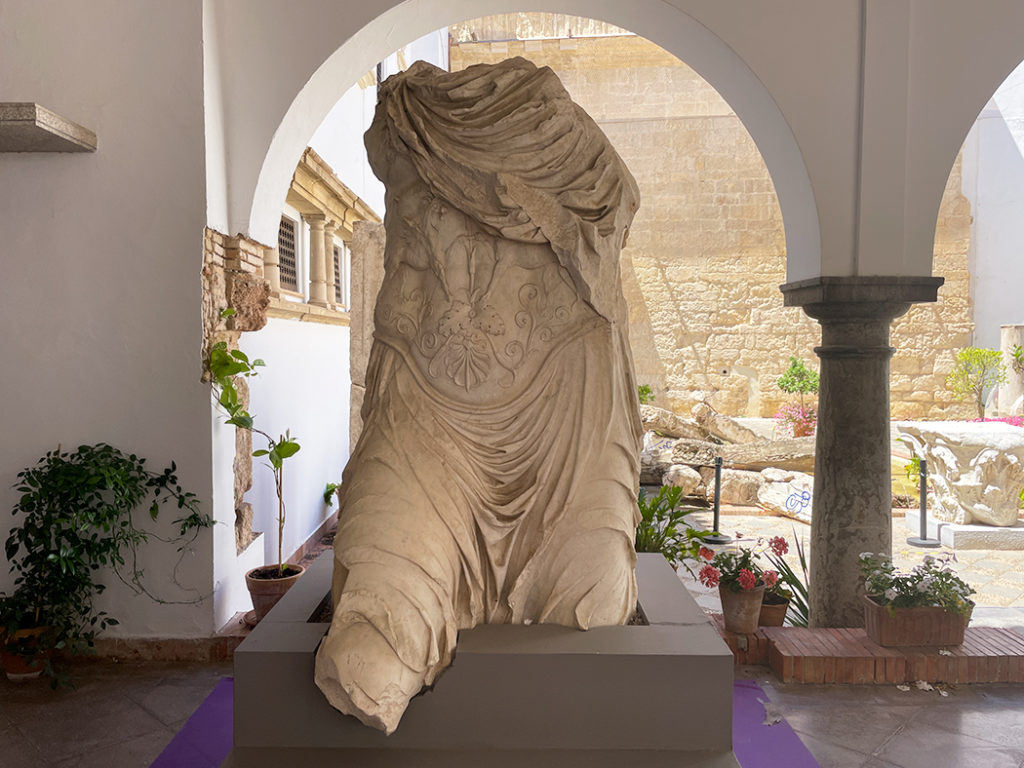
The next stop on our Roman Cordoba walking tour is the Archaeological Museum. You may think that the remnants of the Roman Theatre had been brought to the museum, but this couldn’t be further from the truth.
Historians knew for a long time that there was a theatre in Roman Cordoba. They just didn’t know where exactly to look for it.
Imagine their surprise when the construction of the additional building for the archaeological museum began and the Roman Theater was discovered underneath the building site! Even for Cordoba, this was quite a rare stroke of luck.
You can see the seating gallery of the theatre just behind the ticket-selling office. The stage would’ve been located on the site of the museum cafe. Of course, if you’ve seen the Roman Theater in Malaga, Cordoba’s theatre remnants are not going to impress you.
There is also a stunning gallery of Roman artifacts in the free section of the museum, including statues, mosaics, columns and tombstones.
Roman City Wall
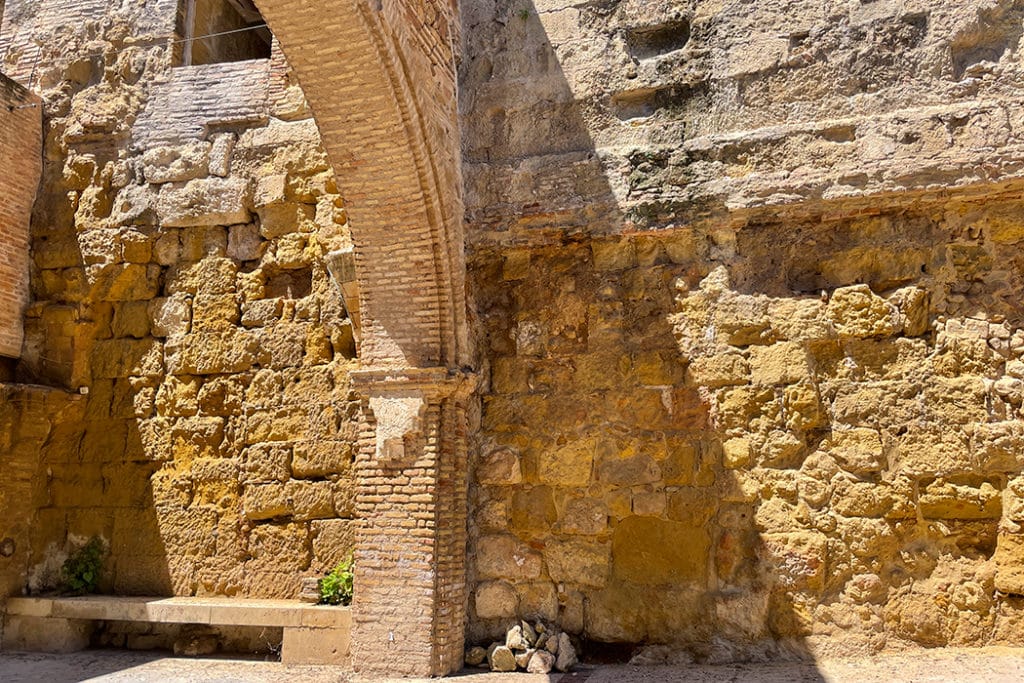
A good section of the Roman city wall runs along Calle San Fernando, although much of it is currently obstructed by a corrugated iron fence.
A good place to see the wall is by the ruined chapel – La Ermita de la Aurora. The wall used to be incorporated into the structure of the chapel. Now that the chapel collapsed the became exposed and can be seen through a fence. I have no idea why Cordoba is not flaunting its Roman heritage with more aplomb.
There is also a gorgeous private house on this street – Casa de los marquises del Carpio, that incorporates a part of the wall into its structure and has a couple of Roman columns on the patio.
Seneca Plaza
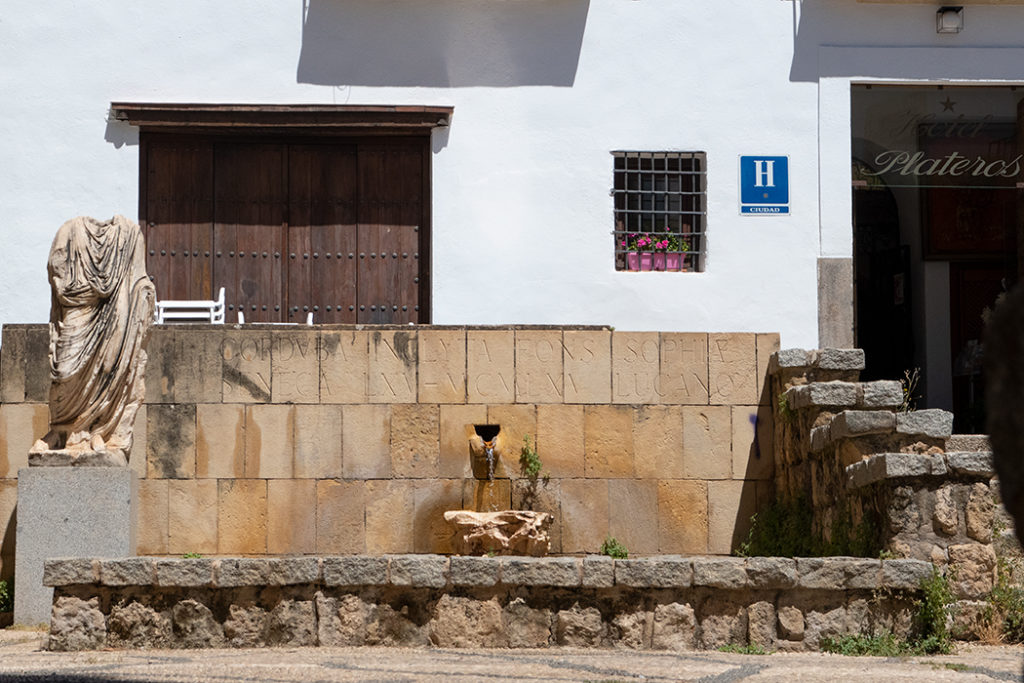
Parallel Calle San Fernando is Plaza Seneca. It is a small square with a Roman statue that’s, unfortunately, missing the head and a fountain dating back to Roman times.
This plaza got its current name quite recently, in 1853, because it is believed that the birthplace of Seneca lies somewhere in this area. To the locals, the plaza is known as Plaza del Descabezado (Headless Square), referring to the Roman sculpture that’s missing its head.
The archaeological site at Centro de Salud Lucano
The next two sites are the hidden gems of Roman Cordoba that are not well-known by the general public. But because both buildings are owned by the government, the sites are open to the public.
The archeological site at the medical centre represents three distinct periods of Roman history and has a fascinating display of the different stages of the urban development of Roman Cordoba. You can see the map of the Roman city, and trace the locations of its key monuments.
Roman Olive oil mill
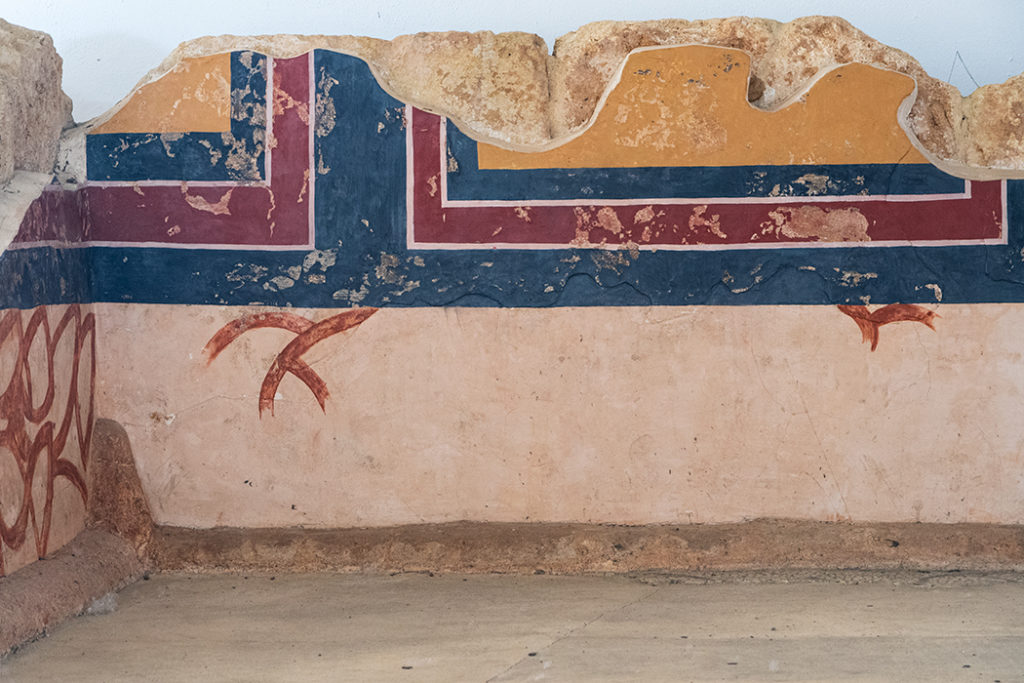
Across the road from the medical centre, in a public carpark, you find the foundation of the Roman olive oil mill. This is a beautiful site with remaining mosaics on the floor and some colour and patterns on the remnants of the walls.
In Roman Cordoba, this was an important commercial neighbourhood lying right outside the city wall, next to Porta Piscatoria gate.
In Roman times, Cordoba was one of the Roman Empire’s major olive oil suppliers. It is still a major industry in Spain. If you take a road trip in southern Spain, you’ll be driving past endless olive groves.
The oil mill dates to the 2nd century AD (approximately around the year 150). The site contains various tanks and channels, pieces of the press used to extract the oil, and numerous fragments of amphorae.
Roman Temple of Cordoba
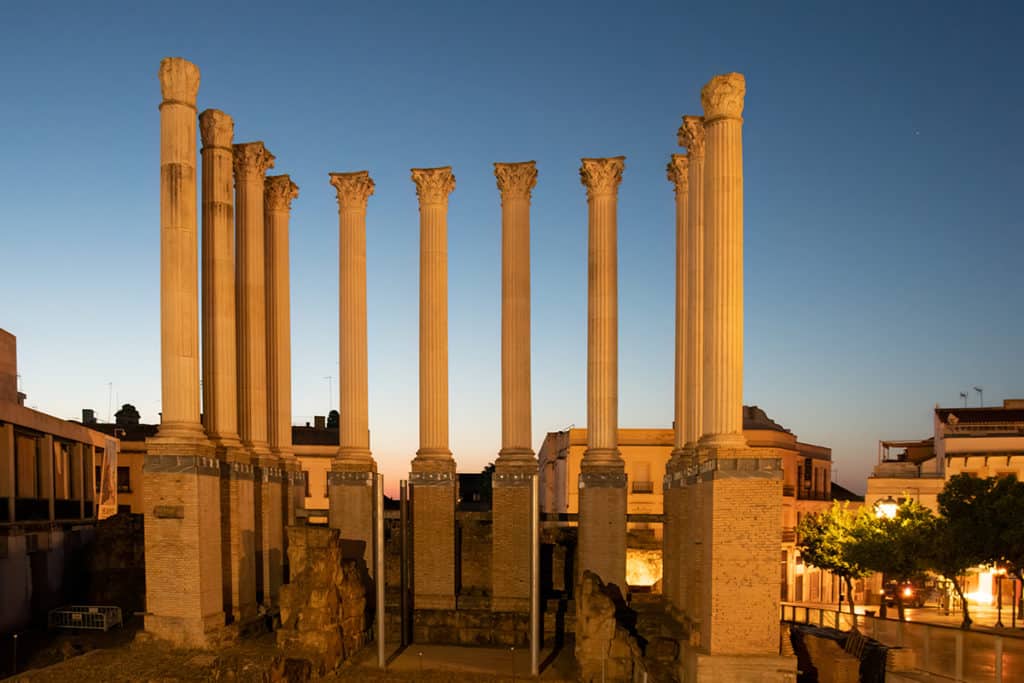
Sitting on a hill above the old city centre, Roman Temple was no doubt one of the finest buildings in Cordoba during the imperial times. It was built to protrude from the city wall that encircled Cordoba, greeting visitors arriving by Via Augusta – the main road connecting Cordoba to Rome and Cadiz
The temple is believed to have been dedicated to the Imperial cult, which was a form of state religion that identified emperors with the divinely- sanctioned authority of the Roman state.
It was built almost entirely from white marble and stood on a raised podium with six free-standing Corinthian columns at the entrance. In front of the collonade was the altar where ritual sacrifices were performed during religious festivals.
What you see today from Claudio Marcelo street is the result of a restoration project carried out in the 1950s. But you can still see some original fragments of the temple at the site – pieces of drums or capitals. Some additional column shafts can also be found in the Plaza de las Doblas nearby.
Roman Villa at Hotel Hospes Palacio del Bailío
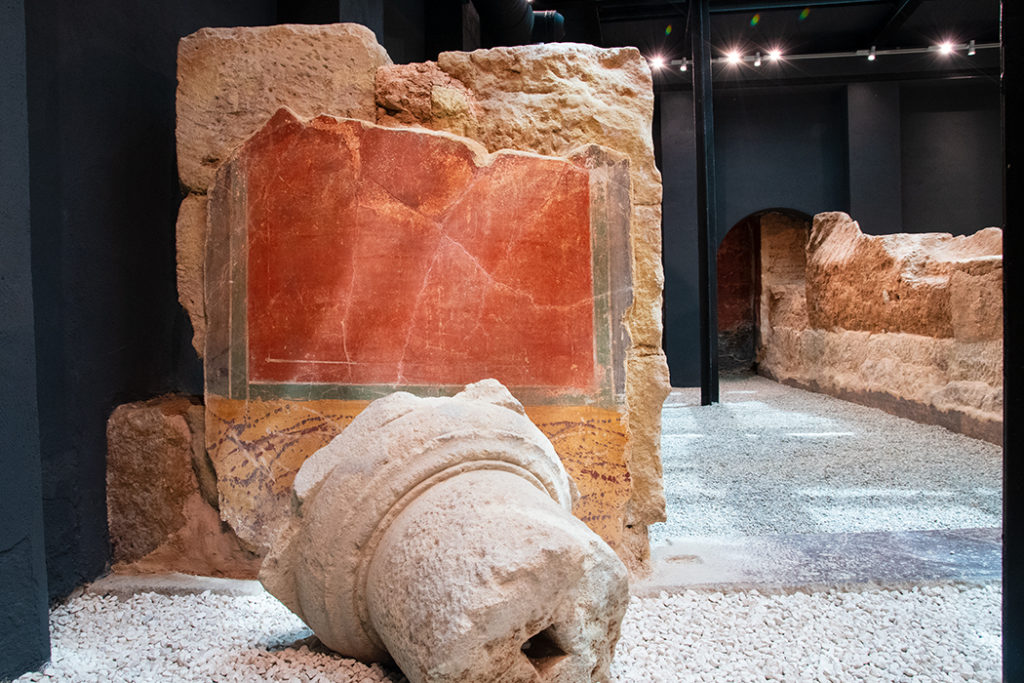
Here is your opportunity to experience some of the lavish Roman lifestyle for yourself. Hotel Hospes Palacio del Bailio is probably Cordoba’s most unique hotel. Located in a Renaissance-style mansion, it preserves a treasure in its basement – the foundation of a Roman mansion. You can clearly see the boundaries of the two rooms and the central entry, where the gate would have been located. The floor is covered by the oldest and best-preserved mosaic in Spain.
The red die used to paint the walls reveals that this villa belonged to a very wealthy person – the red die was outrageously expensive in Roman times.
This basement has been artfully preserved and incorporated into the current structure. You can view it through the glass panels of the hotel’s restaurant floor. Or if you are staying in the hotel, you can ask for a tour at reception.
Roman Baths at Hotel Hospes Palacio del Bailío
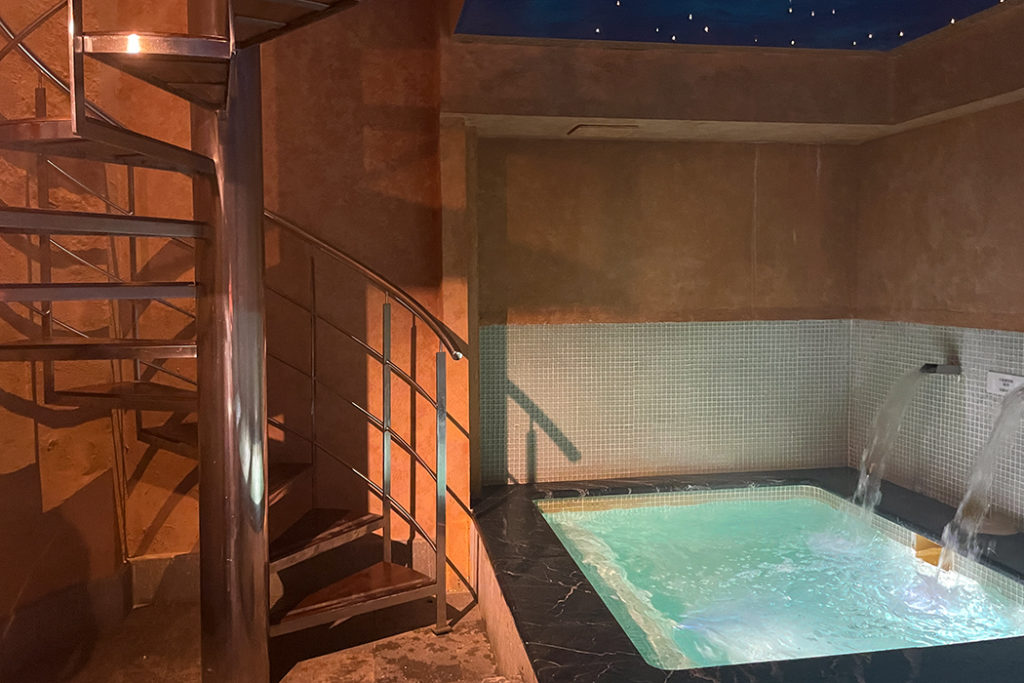
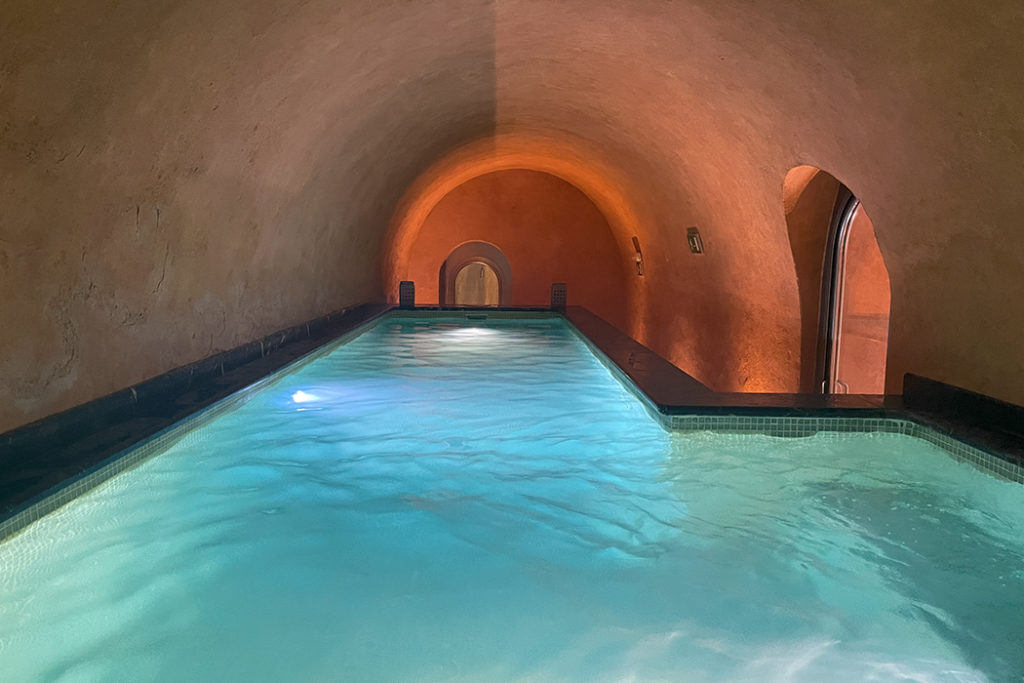
The basement is not all there is to Palacio del Bailio. It gets even better. The Roman villa underneath the hotel had the baths, and the current establishment re-created the Roman Baths in their original location and turned them into the Spa Salon.
Even if you are not staying at the hotel, you can book the Roman Baths experience for about 30 euros and feel like a centurion for an hour or so.
The baths are located in a romantic subterranean room with walls the colour of baked earth, an arched ceiling, muted light, and the sound of rushing water. It is an incredibly relaxing experience, but you need to do it right.
There are three pools of different temperatures. You start by acclimatizing in the warm pool (about 33 degrees), then soak in the hot pool (about 38 degrees), and when you are blissfully relaxed, grit your teeth and take a quick dip in the cold pool (18-22 degrees). I swear it’s closer to 18 than 22. And then repeat your journey as many times as you wish – your session lasts 1 hour.
And unlike the popular and therefore crowded Hammam Al-Andalus, you will have the Roman Baths at Palacio del Bailío all to yourself. You can add a massage to your treatment if you are looking for extra relaxation or spend some time sipping a cold drink on a gorgeous private patio among arched colonnades designed to match the Roman style.
Adietum Forum
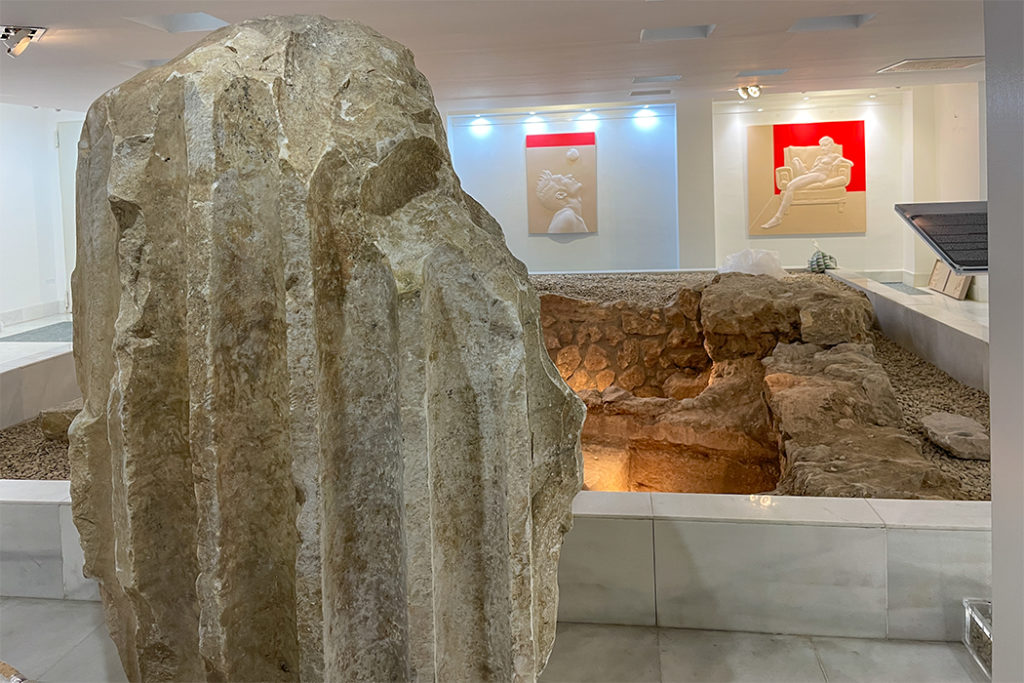
The next two sites are going to be trickier to access since they are located in the basements of private establishments. But I will tell you at the end of the post how to visit them.
First up is the New Forum or Adiectum site located in the basement of the Cordoba Bar Association. Dating back to the first century AD, this forum was the centre of the political, religious, and commercial life of Hispania Baetica. The forum contained a marble temple of mammoth proportions with 8 Corinthian columns on its facade, which was dedicated to the cult of the deified Emperor Augustus.
Among the most impressive artifacts excavated here is a part of one of the monolithic columns that still rests in the basement of the college.
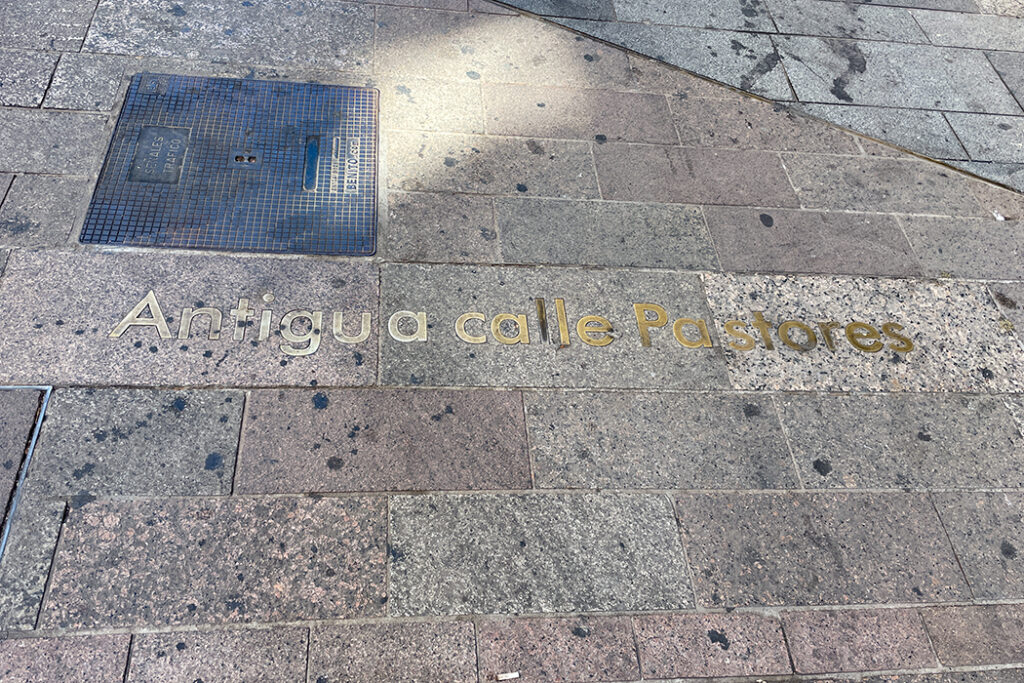
Above ground, you can trace where the forum was located. Just follow the golden dashes on the pavement of Calle Cruz Conde. You can also see the demarcation of two ancient roads that ran in this location in Roman times. As well as the location of the Roman city wall.
Roman Public Baths
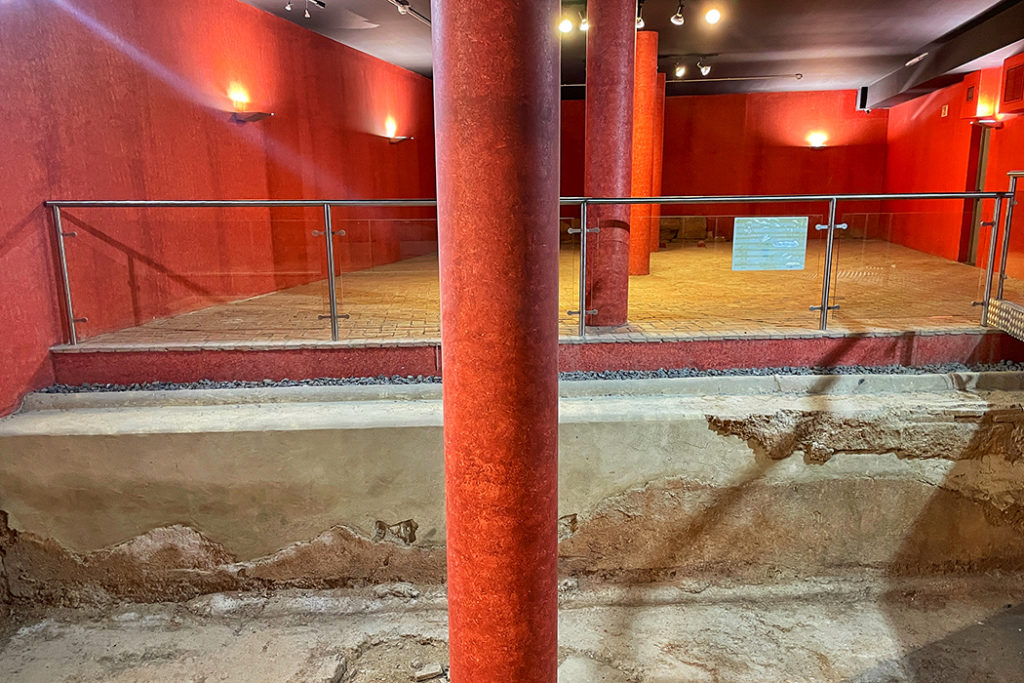
Another underground monument – the Roman Baths, is located in the basement of a retail store on Calle Concepcion.
In the Roman world, the baths fulfilled two functions: as a place for personal hygiene and as a space for social encounters. The city of Córdoba must have had several thermal complexes among its many buildings. The Romans began their bathing ritual by smearing themselves with oil, then going to the warm room, and then to the hot room, where they would take a dry, hot-air bath.
Then they made the reverse route before going to the cold bath in the pool of the cold room. These particular baths were located in a privileged area with respect to one of the main streets of the city: near one of the forums and one of the entrance gates to the city (Puerta de Gallegos). The space preserved here is the cold room swimming pool, enclosed by two walls to the north and south, and contains some steps for access to the pool.
Roman Mausoleum and Roman Road
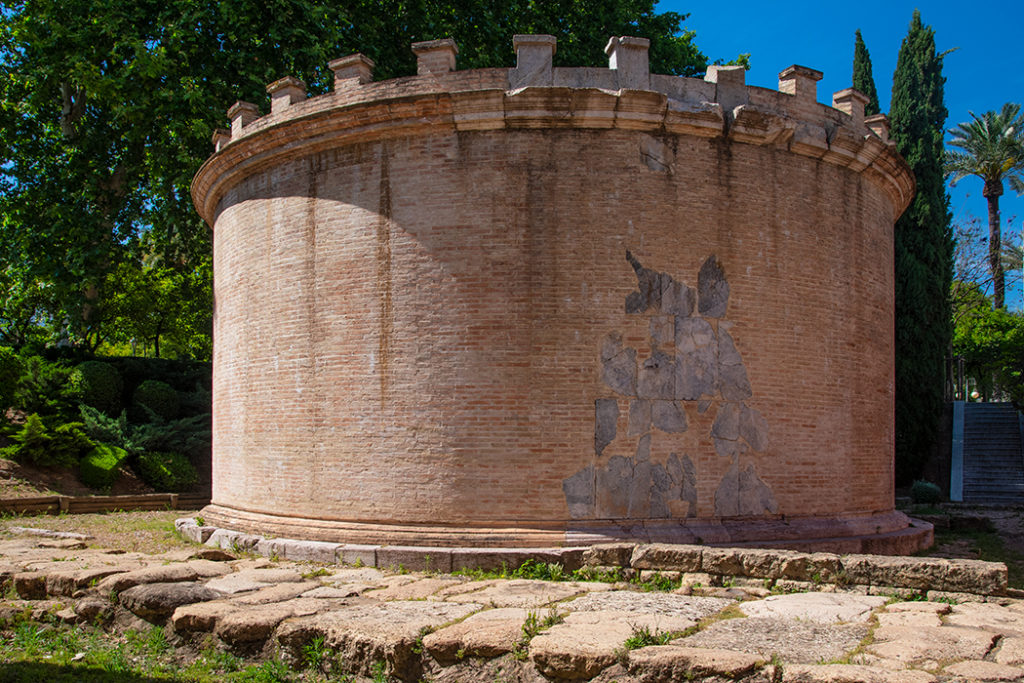
Lying just outside the Roman city wall (this section of the wall did not survive) was the Roman necropolis. Most of the cemetery consisted of simple gravestones, but the wealthy families had dedicated mausoleums to lay their dead to rest. Two of these mausoleums have been reconstructed and can be found today in their original positions in modern-day Victoria Park.
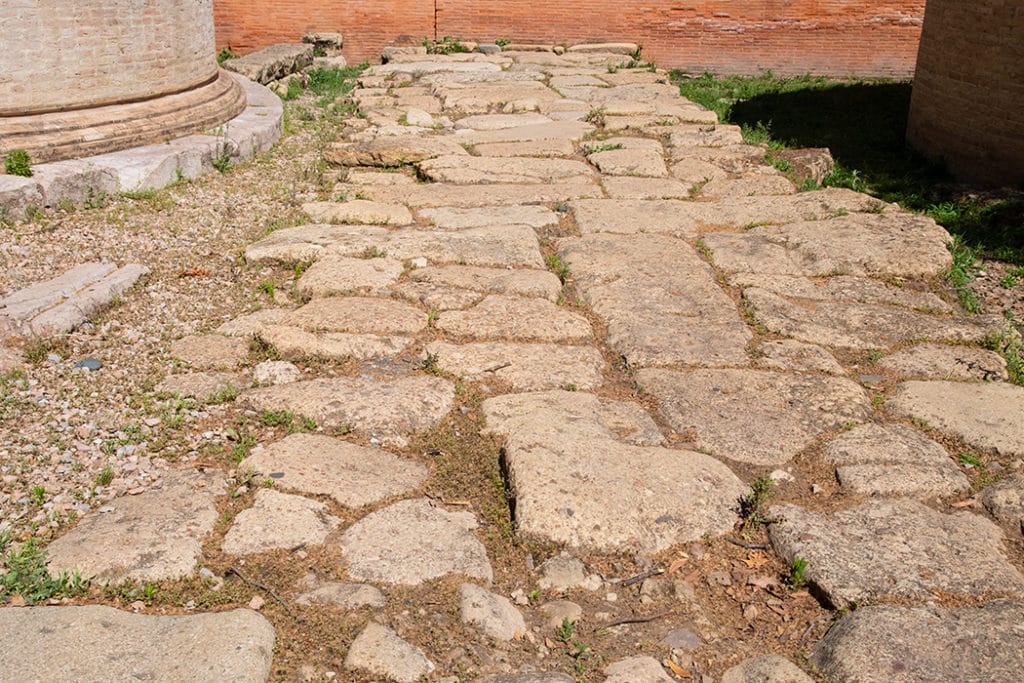
If you walk down the steps to the base of the mausoleum, you will see the paving stones of Via Hispalis – the road that connected Cordoba with Hispalis (Sevilla).
Aqueduct Fontis Aureae
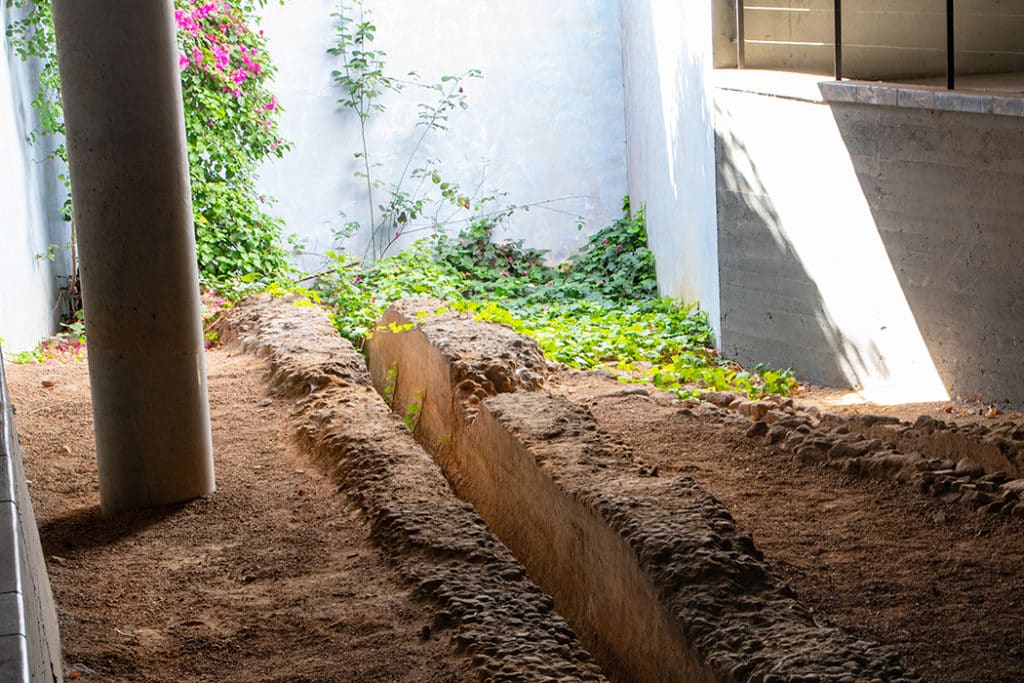
You find one of the remaining aqueducts in an unlikely place – the Cordoba bus station carpark. If you are renting a car in Cordoba, this is the carpark you’ll be picking up your car from. It is a small section of the aqueduct, don’t expect the grander of Segovia here.
It was discovered during the construction of the underground carpark, as most other Roman remains in Cordoba.
Cercadilla Archaeological site
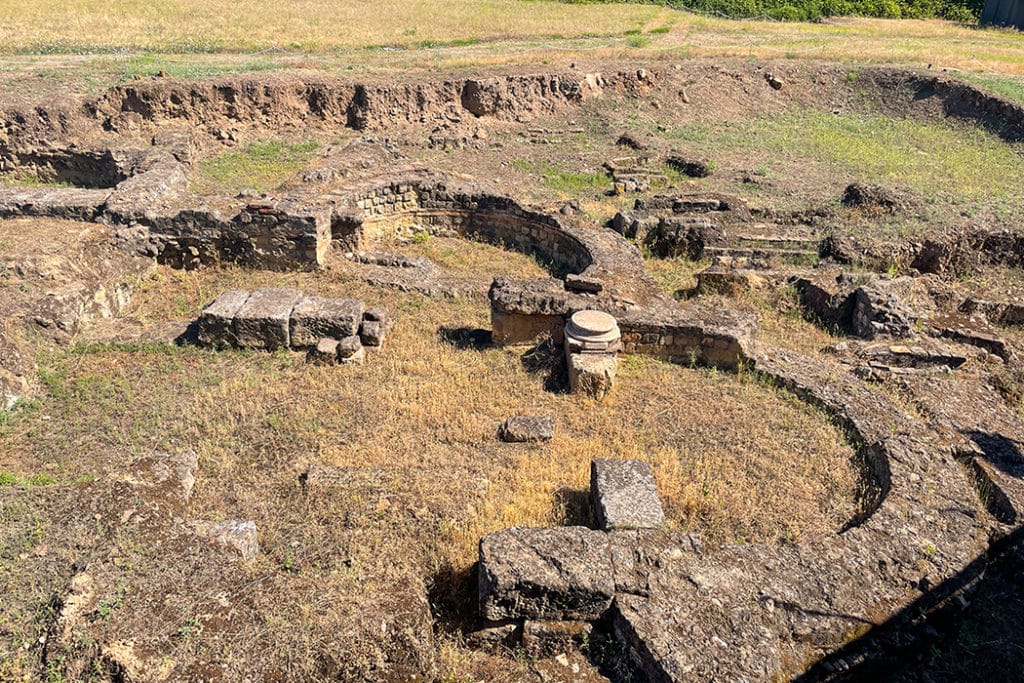
Cercadilla is an extensive archaeological site that preserves the last remains of the Palace of Maximiano Herculeo – a huge complex complete with thermal baths, imperial residences, audience and banquet halls and military barracks.
Unfortunately, most of the remnants of the palace were bulldozed for the construction of Cordoba’s new train station. But you can still see the archeological site and channel your inner Indiana Jones.
Subterranean Cordoba Walking Tour
One of the best ways to explore these areas and gain access to the Roman baths and the Forum (both of which are located in the basements of private establishments) is on an unusual Cordoba walking tour – Subterranean Cordoba (15 euros per person) with Miguel Cantarero of Cordoba Incoming Tours. This tour takes you to a huge variety of hidden gems of Roman Cordoba
I learned more about Roman Cordoba in about 3 hours of walking with Miguel than I have in weeks of combing through multiple websites. Miguel’s passion for his city really does make the tour feel like an Indians Jones adventure.
More on Exploring Spain
- 15 Stunning Waterfalls in Spain to Add to Your Bucket List
- Alicante Old Town – The Charming Barrio Santa Cruz
- Watching Iberian lynx in Sierra de Andujar Natural Park, Spain
- 8 Amazing Things to Do in Segovia on a Day Trip from Madrid
- Discover Madrid Old Town: From the Moors to the Austrians
- Malaga Old Town: Where Romans, Moors and Picasso Meet
- 5 Gorgeous Hotels in Granada to Consider for your Next Trip
- Discover Moorish Granada in One Day on This Self-Guided Walk
- Sacromonte Caves: The Best-Kept Secret in Granada
- 17 Fabulous Weekend Breaks in Spain: Must-See Destinations and Hidden Gems

